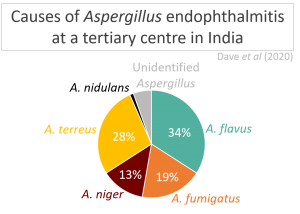Submitted by GAtherton on 13 June 2016

Plants have been a well-used source of clinically active chemicals for centuries. Many well-known drugs such as morphine and codeine are derived from plants that produced them naturally. The poppy and barberry plants (amongst others) produce over 2500 similar compounds named isoquinoline alkaloids which have useful medical properties for the treatment of malaria, HIV, Parkinson’s, tumours and many more. They are thus highly valued and new variants are sought with much interest.
More recently the arrival of new drugs derived from plants have become much less common. However, researchers from Germany have shown that a biosynthetic gene cluster in the fungus Aspergillus fumigatus produces several novel isoquinoline alkaloids, which they named fumisoquins. The discovery of a parallel synthesis pathway in fungi makes Aspergillus a potential target for the discovery of novel drugs and their production. Intriguingly the investigators realised that the fungus was synthesising fumisoquins in a very similar way to plants using a biosynthetic pathway never before seen in fungi – it was a part plant and part fungus pathway!
Axel Brakhage, university professor and head of the Leibniz Institute for Natural Product Research and Infection Biology, explains: “Fungi and plants diverged early on during evolution. The newly discovered fumisoquin synthesis pathway shows that there was a parallel development for the production of isoquinoline alkaloid compounds in both groups of organisms. This opens up new roads for combinatorial biotechnology in order to advance the search for novel active compounds and thus to develop urgently needed new drugs.”
News archives
-
Title
Date


